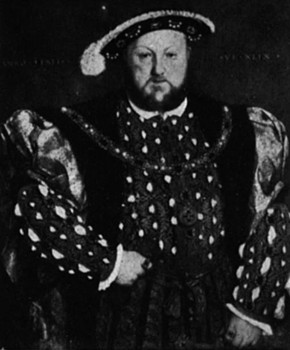England's Elizabeth I: Queen of a Golden Age
Part 1: Bloodlines and Battle Lines Elizabeth Tudor became Queen of England when she was 25. Her life up to that time had been full of strife, and her life as reigning monarch was of a similar difficulty. Through it all, she built a reputation for being a popular, cautious, and inspirational heir apparent and ruler, a woman so beloved by her people that the date of her ascension to the throne was celebrated as a national holiday for 200 years.
That woman was Anne Boleyn, and she gave birth to one child, Elizabeth. Queen Anne had trouble producing a son as well, and she was killed, on charges of treason. Henry's third wife, Jane Seymour, finally England its long-sought-after male heir, who became King Edward VI. Elizabeth grew up in Edward's shadow, since the son of a king was naturally the heir apparent, even if he was younger than another of the monarch's children. In Edward's case, he had two older sisters: Elizabeth and Mary, whose mother was Henry's first wife, Catherine of Aragon. Henry had six wives in all, and Elizabeth suffered through a childhood of revolving mothers. Even so, she received an excellent education. She proved to be an adept student, especially at languages, and could speak five of them fluently by the time she was an adult. This skill would come in especially handy in Elizabeth's later years, when she was fending off competing suitors. King Henry VIII died in 1547, and his son, Edward, became king. Edward was only 9, so his uncle, Edward Seymour (Jane's brother), was named Protector of England (or the real power behind the throne). Edward's younger brother, Thomas, tried to kidnap the boy king and take the throne for himself. The plot failed, and Thomas was put to death. Edward came into his own a bit and ruled into his teen years but died of a lingering illness in 1553. His older sister, Mary, became Queen Mary I.
Like her brother before her, Mary suffered from a lingering illness and died, on November 17, 1558. Elizabeth became Queen. Queen Elizabeth I was crowned in an elaborate Westminster Abbey ceremony on January 15, 1559. Right away, she re-established the Anglican Church. Right away, she set about restoring the prestige of a country that had been torn by religious division. Right away, she began to receive marriage proposals. Next page > Marriage and War > Page 1, 2, 3 |
|
Social Studies for Kids
copyright 2002–2025
David White



 Elizabeth was born on September 7, 1533, at a pivotal time in English history. Her father was
Elizabeth was born on September 7, 1533, at a pivotal time in English history. Her father was  As queen, Mary tried to reinstate her personal faith, Catholicism, on the country. She even went so far as to marry Spain's King Philip II, also a Catholic. Like her father, Elizabeth remained an Anglican. This religious division threatened to split the country. Mary, suspicious of her sister's motives, had Elizabeth imprisoned in the Tower of London. It was there that she met Robert Dudley, later named the Earl of Leicester. Though they would go their separate ways in the end, Elizabeth and Robert remained romantically linked for the rest of their lives.
As queen, Mary tried to reinstate her personal faith, Catholicism, on the country. She even went so far as to marry Spain's King Philip II, also a Catholic. Like her father, Elizabeth remained an Anglican. This religious division threatened to split the country. Mary, suspicious of her sister's motives, had Elizabeth imprisoned in the Tower of London. It was there that she met Robert Dudley, later named the Earl of Leicester. Though they would go their separate ways in the end, Elizabeth and Robert remained romantically linked for the rest of their lives.
